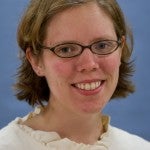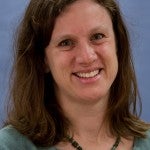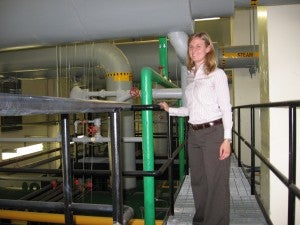 By Kealy Devoy, 2011 Climate Corps Public Sector Fellow at the Town of Cary, NC; MEM Candidate at Duke University’s Nicholas School of the Environment
By Kealy Devoy, 2011 Climate Corps Public Sector Fellow at the Town of Cary, NC; MEM Candidate at Duke University’s Nicholas School of the Environment
If there’s one thing I’ve learned while working in the environmental arena, it is that change does not happen in a vacuum. We need to actively involve as many people in the organization as possible. Generating buy-in for workplace sustainability can be challenging, but with a few key strategies, we can start winning people over.
In my last post, I outlined seven core steps to catalyzing change within an organization, and talked about how the Town of Cary has implemented the first step. Those seven steps are:
- Make it official.
- Identify the changers.
- Change is not binary.
- Operate in parallel.
- The Rule of 7.
- Market internally and externally.
- Celebrate successes.
Steps two through four are about how to initiate change. Here’s what I’ve been up to over the past few weeks:
#2: Identify The Changers
The changers are the people who are excited about sustainability. They have ideas, enthusiasm, and momentum. If the organization has many departments, finding changers in various parts of the organization will promote sustainability in each department. Through these changers, you can develop relationships with different individuals and departments on their terms. The initial focus should be on why sustainability is important, and what the benefits of pursuing it are.
One project I am working on focuses on energy efficiency improvements for the Town’s fire stations. The Fire Chief gave me a list of changers from each of the seven Cary Fire Stations who were chosen based on an interest in energy and environmental issues. Having someone at each station who is excited by sustainability has been exceedingly helpful in building buy-in.
#3: Change Is Not Binary
Sustainability is not simply green or not. There are many facets of sustainability, all of which are steps in the right direction. It is important to tackle only as many projects as your organization can handle. Start small, minimize risk, and pick the low-hanging fruit. You don’t need to be generating all of your power from solar panels by tomorrow in order to be sustainable.
Energy efficiency is a great way to get started. Many projects involve low-to-no cost, such as turning down temperatures on hot water heaters and enforcing thermostat temperature set points. Other projects have short payback periods, like upgrading exit signs to LEDs. Still more projects, like preventative maintenance of HVAC systems, have co-benefits including improved occupant comfort and better indoor air quality.
#4: Operate in Parallel
Because the route to a sustainable organization is ongoing and ever-evolving, we should use many simultaneous tools to catalyze change. These include comprehensive strategic plans, various investment structures, capital projects, maintenance programs, and more.
One important consideration here is the impact of these projects on the facilities and maintenance staff. The Town chooses to operate in parallel not only in pursuing projects, but also with how to implement these projects so that their facilities team does not get overwhelmed. Namely, they choose their in-house projects wisely, and hire contractors for the rest.
These three steps are an important part of initiating change within an organization. The next three steps are all about how to communicate this change effectively and efficiently. Check back soon for more on the remaining three steps!
This post reflects the personal opinions of Kealy Devoy, and does not reflect the positions, strategies, or opinions of the Town of Cary.
EDF Climate Corps Public Sector (CCPS) trains graduate students to identify energy efficiency savings in colleges, universities, local governments and houses of worship. The program focuses on partnerships with minority serving institutions and diverse communities. Apply as a CCPS fellow, read our blog posts and follow us on Twitter to get regular updates about this program.
















